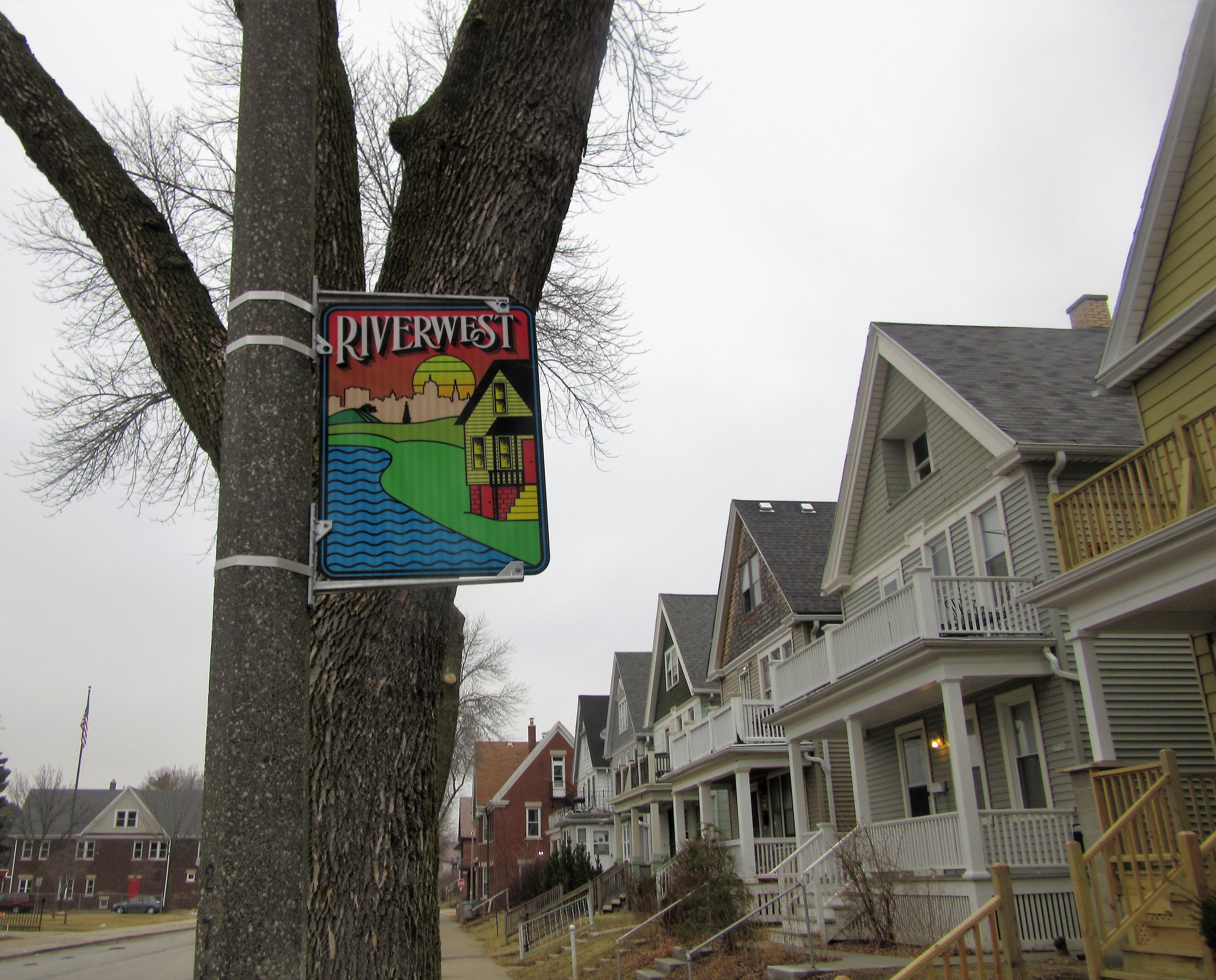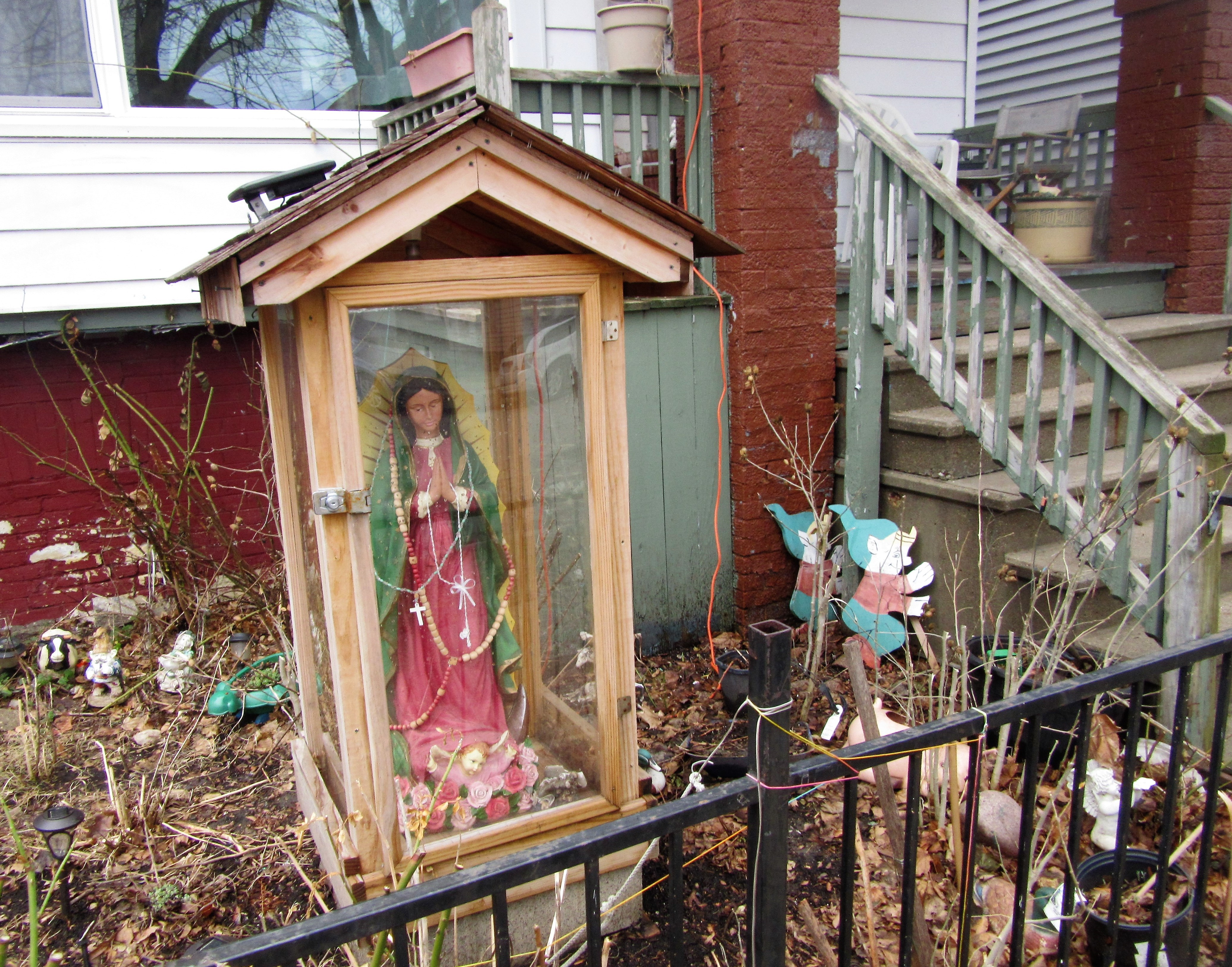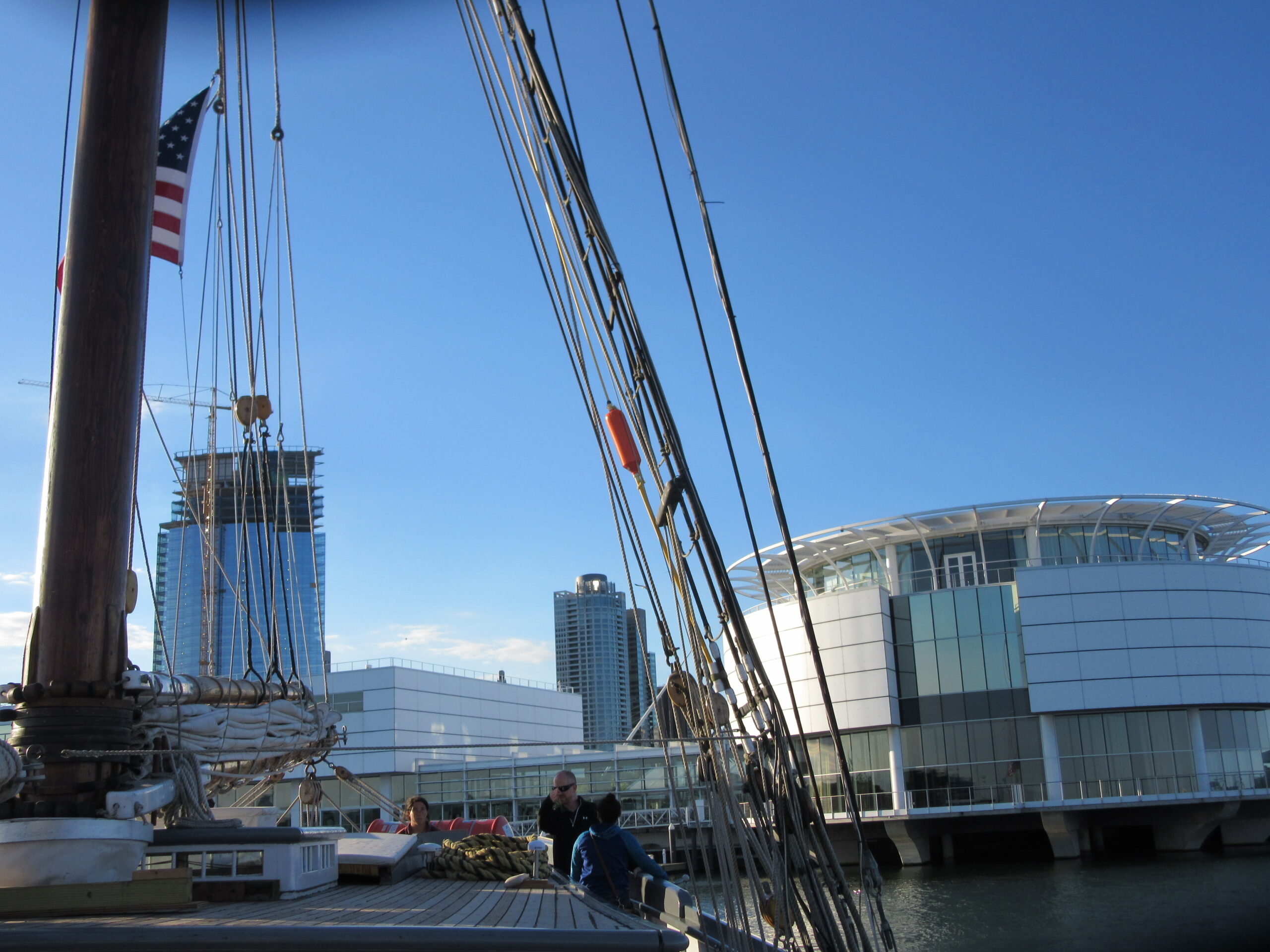
Our September 2016 departure from the Denis Sullivan’s dock, outside Discovery World on the Lake Michigan shore of Milwaukee. All photos by Kevin Lynch
We can absorb history in many ways, but it’s usually in a second-hand or secondary source way, like reading a book, or watching a documentary. Historically-attuned scholars and artists can surely illuminate the past with immeasurable brilliance and depth. The work of documentary-filmmaker supreme Ken Burns comes to mind, as do historians like Eric Foner, John Meacham, Shelby Foote, David S. Reynolds, Joseph Ellis, Sean Wilentz, David McCullough and others.
Yet for years, Milwaukee has been blessed with something even more vivid and experientially historical than those gifted people’s best efforts, even when they are talking as guest pundits on TV. I’m talking about a mainline to history as real as stepping aboard a tall sailing ship transporting you to the glory days of such vessels in the mid-1800s, the era of Moby-Dick, Two Years Before the Mast, and Typhoon. 1
In September of 2016, I was fortunate enough to take that step, off the Milwaukee harbor onto the city’s majestic flagship schooner S/V Denis Sullivan, for a Lake Michigan tour, which helped inspire this blog. It was motivated to do research for my novel about Herman Melville. I had visited an actual docked whaleship from the era, The Charles W. Morgan, in Mystic, Connecticut.
But I’d never actually sailed on a tall mast ship from that era, even if this one was a hybrid replica, built by volunteer Milwaukeeans – the world’s only re-creation of a 19th-century three-masted Great Lakes schooner. She was the flagship of both the state of Wisconsin and of the United Nations Environment Programme . .
And here you begin to get an inkling of our state’s loss, when the ship – stripped of it’s tall masts — departed on October 8 for Boston, and it’s ultimate destination, St. Croix, now sold to a company in the Virgin Islands – as reported superbly by Milwaukee Journal-Sentinel Reporter Chelsey Lewis, in the in-depth article linked to below.
Noted Milwaukee folksinger David HB Drake, a vocal opponent of the sale, had a suggestion, as he posted on his Facebook page: “OMG– The Denis Sullivan has been sold to Boston.
However, that museum is currently in the midst of its own campaign to raise $1.5 million to put the USS Cobia, its World War II submarine, in dry dock, Lewis reports. The Manitowoc museum considered possibly serving as a home port for the ship, but not the home port.
Other organizations, like the National Oceanic and Atmospheric Administration “were considering partnering with Discovery World to use the ship for programming around the newly designated Wisconsin Shipwreck Coast National Marine Sanctuary, but they, too, could not take primary ownership of the boat.”
Lewis reported on a former crewmember, Michael Gaithier, who expressed bitterness:
The boat was treated like an unwanted stepchild … it was neglected and not taken care of in the way that most tall ships with most healthy organizations behind them in this country have been taken care of

Back in September 2016, sail boats breeze by the port side rigging of the Denis Sullivan with the Milwaukee skyline in the background.
For my part, as an appreciative memory, I’ll convey some of our experience on the schooner. In September of 2016, there we were, riding the waves with the huge sails billowing to and fro, as the wind took us.

Ann Peterson in the deck of the schooner Denis Sullivan in September of 2016.
The historical schooner cruise was a birthday gift to me from my companion, Ann Peterson. And it was the palpable, wind-in-your-face, and even intoxicatingly moving experience I’d hoped for, even it proved too much for the steadiness of Ann, who started out gamely, as the picture above shows. Yet as the good ship dipped and swayed in the slightly feisty waters just beyond the Milwaukee harbor breakwaters, she grew a little green in the gills, and her chipper smile faded.
That’s part of the physical reality of being on open waters on such a vessel, but there’s so much more. You begin to get a sense of how a person can release oneself from the confining and aggravating patterns of workaday and quotidian problems and pitfalls, and from the looming shadows of psychological malaise that life’s tensions and burdens can impose.
This sort of voyage lacks the tony creature-comforts and luxuries of an expensive cruise. Rather it does transport you back to a much heartier distant time, when brave people traveled and worked much closer to the elements of water, sun and wind. In reflection, one may draw from this elemental immediacy some sense of the holistic importance of water, covering the vast majority of the globe, and the ecosystems it sustains on water and land.
These are things that a writer like Melville, despite (and because of) being a whaler in his early adulthood, proved quite aware of, for a man of his time. His masterpiece novel reveals that he had profound regard and respect for the whale and its place in “the watery part of the world,” as narrator Ishmael pointedly calls it, in his very first reference to the oceans, in “Loomings,” Chapter 1 of Moby-Dick. Or consider his gloriously attuned description of a great herd of nursing female whales in Chapter 87, “The Grand Armada.” Such are some the educational aspects this vessel can pursue, though I’ve never taken an educational cruise on it, per se.
How resonant is the ship’s presence culturally? Well, for one example, renowned folk singer Pete Seeger recorded a song called “The Schooner Denis Sullivan” in 2001. 2
Here, Seeger sings his story-telling song a cappella:
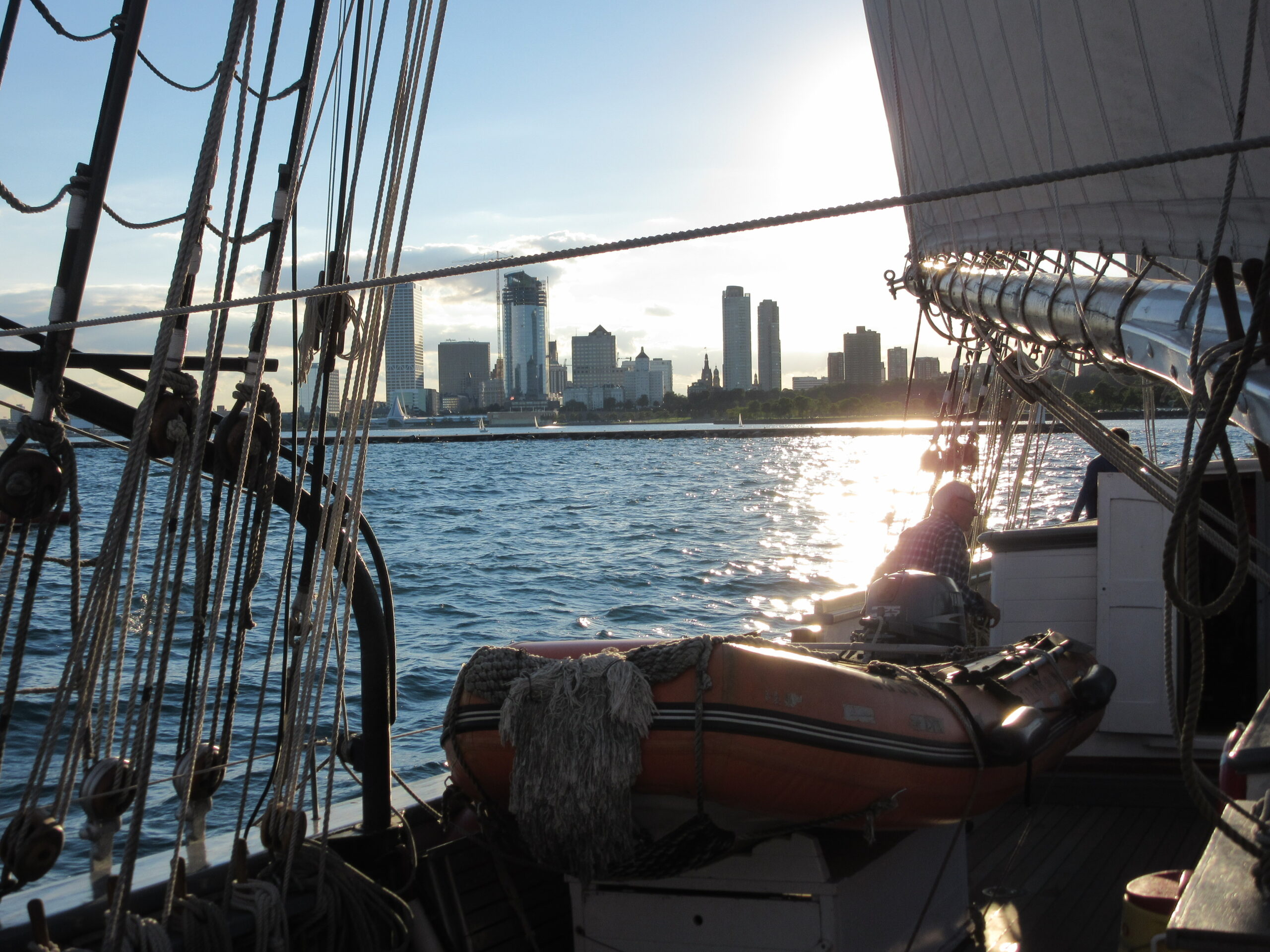
The Milwaukee skyline from port side of the Denis Sullivan.
Back on the deck, one of the crew members pulled out a fiddle, as did one of the guests and the pair parlayed out a lively Irish-style reel. (Blog story with link to Milwaukee Journal-Sentinel article continued, below photo sequence)
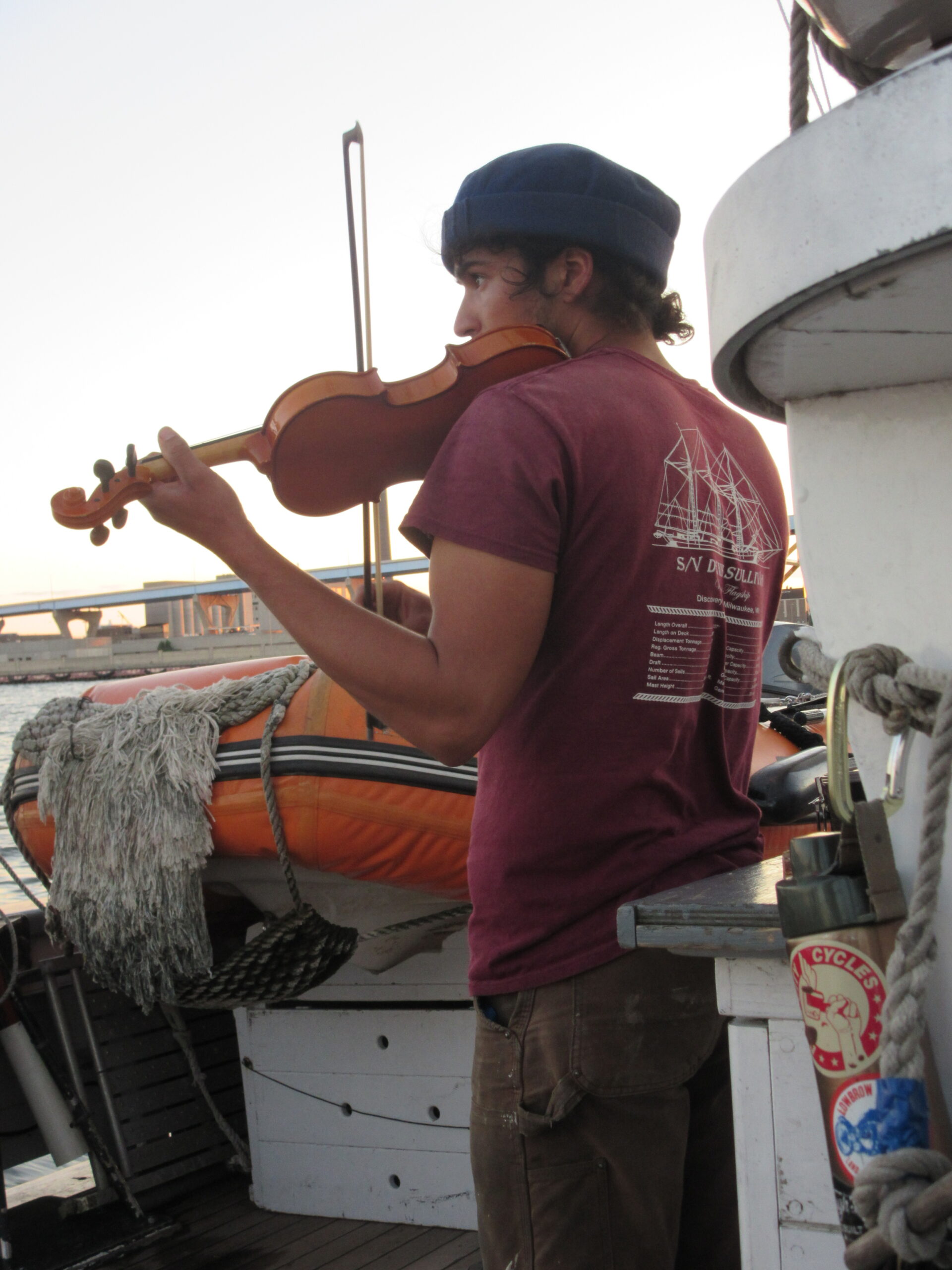
A crew member of the Denis Sullivan pulls out his fiddle to engage in a couple of Irish-style reels with a fiddle-playing passenger (not pictured).

Denis Sullivan Captain Carlos Canario at the schooner’s helm (gripping the steering wheel behind him) along Lake Michigan during our tour on the ship in 2016. Canario was the Relief Captain for Senior Captain Tiffany Krihwan, who has now departed and is now based in New Bedford, Massachusetts, the historically famous whaling town. t
In the tradition of Impressionist painters, see three views (above and below) of Milwaukee’s harbor and Hoan Bridge from the schooner Denis Sullivan, as the sun sets in the West. 


An example of the sort of strange phenomenon one can experience out in the incalculable and evocative atmospheres of a Great Lake was this photo I took, from the Denis Sullivan. The ghostly spherical presence or optical effect hovers above the top of Summerfest’s Marcus Amphitheatre. I fancifully dub it “Sphere of sea god.”
***
Milwaukee Journal-Sentinel Reporter Chelsey Lewis admirably functions as a nautical and cultural historian in her comprehensive report on Milwaukee’s recent loss of the Denis Sullivan in the newspaper’s Sunday Life section. She provides an in-depth sounding, a voyage into the good ship’s past, present and future:
The seeming tragedy is the story Ms. Lewis tells of the decision to sell, reportedly precipitated by the pandemic and the apparent failure to hire a new captain and first mate, after longtime ship Captain Tiffany Krihwan and her first mate were forced to leave by economic circumstances. Those included the shutting down of the ship for well over a year, along with Discovery World, to which it belonged. The reasons for the Denis Sullivan to be sold to another operation, World Ocean School, in, St. Croix, the Virgin Islands, remain questionable, especially given that there was a potential buyer in Chicago who would’ve kept the ship based in Milwaukee. The Chicago outfit, Tall Ship Windy, was prepared to make an offer close to the market value, about $1 million, Lewis reports.
By contrast, it is also troubling that Discovery World’s representatives refused to divulge the actual price of the ship’s sale. However, the successful sale should also underscore how distinguished and rare the Milwaukee-built schooner is for historical value, among other things, and the cultural loss Milwaukee is incurring. The sale rationale came down to a decision as to what is “best for the boat,” including maintaining one of its primary purposes as an educational entity. Why such a function could not continue to be maintained in Milwaukee remains unclear, aside from financial woes the operation is still apparently recovering from, post-pandemic.
The schooner’s powerful presence had also helped attract cultural events to its Discovery World dock, such as the evening concert by the popular Milwaukee jazz group VIVO, which was going on when we returned to dock in 2016.

Saxophonist-flutist Warren Wiegratz performs with VIVO, in a dockside concert going on as the Denis Sullivan, in background, moored after our September 2016 voyage on the 19th-century style schooner.
But read the Journal-Sentinel article to judge for yourself on the whole story of the city’s loss of the ship.
Lewis’s story does finally latch on strong rays of hope. The World Ocean School purchased the Milwaukee ship to replace it’s own flagship, which is now docked up for a few years for refurbishing. There’s a possibility they could be open to selling the Denis Sullivan back to Milwaukee when their own ship is ready to sail again. It is after all, a Great Lakes-style schooner. Still, one must consider such circumstances could change as drastically as the ever-roaming tides of the oceans and those Great Lakes, in all their magnificent and mystifying vagaries.

This two-sequence photo of Madison photographer Katrin Talbot (taken a few years before my trip on the ship) in collaborative research work for this writer’s Melville’s novel, shows some of the scale of the schooner Denis Sullivan. Retrospectively, Katrin seems to bid the ship farewell.
____________
1 In the afore-mentioned titles, authors Herman Melville (Moby-Dick), Richard Henry Dana Jr. (Two Years Before the Mast), and Joseph Conrad (Typhoon) gave us first-hand accounts, or concocted creative ships of transport themselves, in often-poetic prose. These were all based on their actual nautical experiences.
The mid-1800s were haunted by captains courageous and crazed, mighty sea creatures, countless sailors and whalers (drowned and survived), “widow’s walk” wives, and others who directly engaged in, or experienced, the drama and danger of 19th-century sea commerce, romance, and warfare (see Melville’s White-Jacket and Billy Budd, both set on warships).
2. Denis Sullivan Wikipedia page: https://en.wikipedia.org/wiki/Denis_Sullivan_(schooner))



